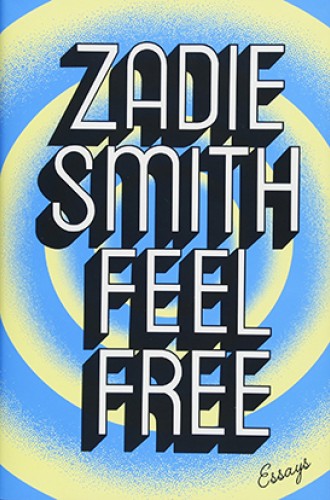Zadie Smith leaves no cultural stone unturned
Smith's collection of essays considers the self as an improvised response to language and the world.
While Zadie Smith’s novels, from White Teeth to Swing Time, examine the contours of self and society, her brilliant and evocative essays shine a radiant, sometimes glaring, light on the shortcomings, the hopes, and the ragged joys of our culture. The essays in her new collection, mostly previously published in the New York Review of Books and the New Yorker, are nicely divided into five sections—“In the World,” “In the Audience,” “In the Gallery,” “On the Bookshelf,” and “Feel Free”—that explore the ways that we create our feelings of freedom, especially through social organizations or art, and the ways such feelings can bind us.
Smith candidly reflects on a friend’s comment that Smith’s writing has thus far been a “fifteen-year psychodrama.” After living with that comment echoing through her psyche for a few days, Smith concludes that perhaps there is some truth to it. Thinking of the essays she’s selected for Feel Free, she considers the manner in which her writing frees her, and she also shares the hopes that reading her writing will allow others to feel free:
Read our latest issue or browse back issues.
Writing exists (for me) at the intersection of three precarious, uncertain elements: language, the world, the self. The first is never wholly mine; the second I can only ever know in a partial sense; the third is a malleable and improvised response to the previous two . . . It’s this self . . . that I try to write from and to. My hope is for a reader who, like the author, often wonders how free she really is, and who takes it for granted that reading involves all the same liberties and exigencies as writing.
Smith’s essays range over a variety of topics from rap, Joni Mitchell, and Orson Welles to Justin Bieber, beaches, and bathrooms. She includes a handful of her book reviews, including those she wrote for Harper’s, in one of which she praises Edward St. Aubyn’s sentences as “important because they enable comedy: when you create this many compartments in each line, you have space for at least two jokes and one sly dig.” In her review of Hanif Kureishi’s The Buddha of Suburbia, Smith reflects on the opening lines of novels and the opening words of Kureishi’s novel, declaring that “I thought an English sentence was a kind of cat-o’-nine tails, to be used, primarily, as a tool for whipping children into submission. I didn’t know you could speak to a reader like this, as if they were your equal—as if they were a friend.”
In a very timely essay on the movie The Social Network, Smith wonders, “Shouldn’t we struggle against Facebook?” Not content to deliver just a movie review, she zeroes in on the question of the social value of Facebook and concludes that the movie—and Facebook—is “a cruel portrait of us: 500 million sentient people entrapped in the recent careless thoughts of a Harvard sophomore.” Allowing no cultural stone to go unturned, she uncovers a pedigree for rappers that even they might not claim for themselves, but which offers luminous insights into the rap scene. “Asking why rappers always talk about their stuff is like asking why Milton is forever listing the attributes of the heavenly armies. Because boasting is a formal condition of the epic form.”
In the most poignant essay in the book, Smith struggles to find optimism in the midst of “the darkest political times I have ever known.” She expresses her tentative optimism through a musical metaphor: people are “like complex musical scores from which melodies can be teased out and others ignored or suppressed, depending . . . on who’s doing the conducting . . . those of us who remember a finer music must now try to play it, and encourage others, if we can, to sing along.”
Each essay and review in Feel Free contains sparkling gems of wisdom that reflect brightly various facets of the world and self, embedded in Smith’s luminous language. She encourages readers to feel free to enter the worlds into which her writing invites them, exploring with them the many paths down which she travels.







